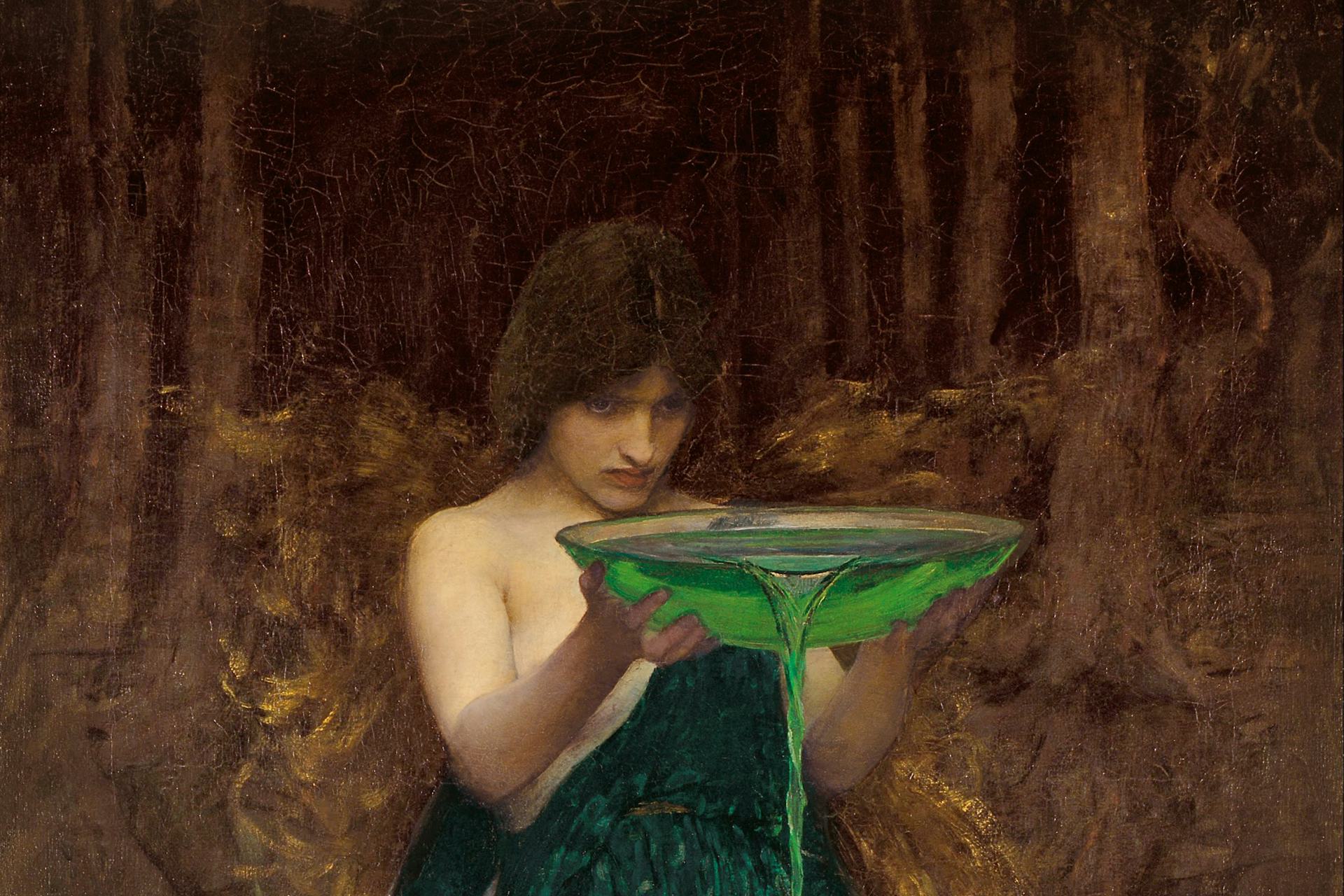Circe

Circe Invidiosa by John William Waterhouse (1892).
Art Gallery of South AustraliaPublic DomainOverview
Circe was an immortal Greek goddess and sorceress, the daughter (in most accounts) of Helios and the Oceanid Perse and thus the sister of Aeetes and Pasiphae. She lived on the island of Aeaea, located on either the eastern or western edge of the world.
Circe is perhaps best known for her role in the Odyssey, where she turns a few of Odysseus’ men into pigs but is forced by the resourceful Odysseus to turn them back. Before Odysseus leaves her, Circe gives him important advice and instructions on how to get home.
Circe also featured in other myths, including the tale of the Argonauts, in which she was the one who purified Jason and Medea for their murder of the Colchian prince Apsyrtus. In another tradition, Circe’s son by Odysseus, Telegonus, wound up killing his father by accident, after which he married Odysseus’ widow Penelope while Odysseus’ son Telemachus married Circe. Later sources told of Circe’s unhappy love for figures such as Glaucus and Picus.
Circe was a popular figure in ancient literature as well as art, where she was often represented with Odysseus or with the humans she had transformed into animals. Today as in antiquity, she is often seen as a symbol of the dehumanizing pursuit of pleasure, which causes human beings to turn into animals.[1]